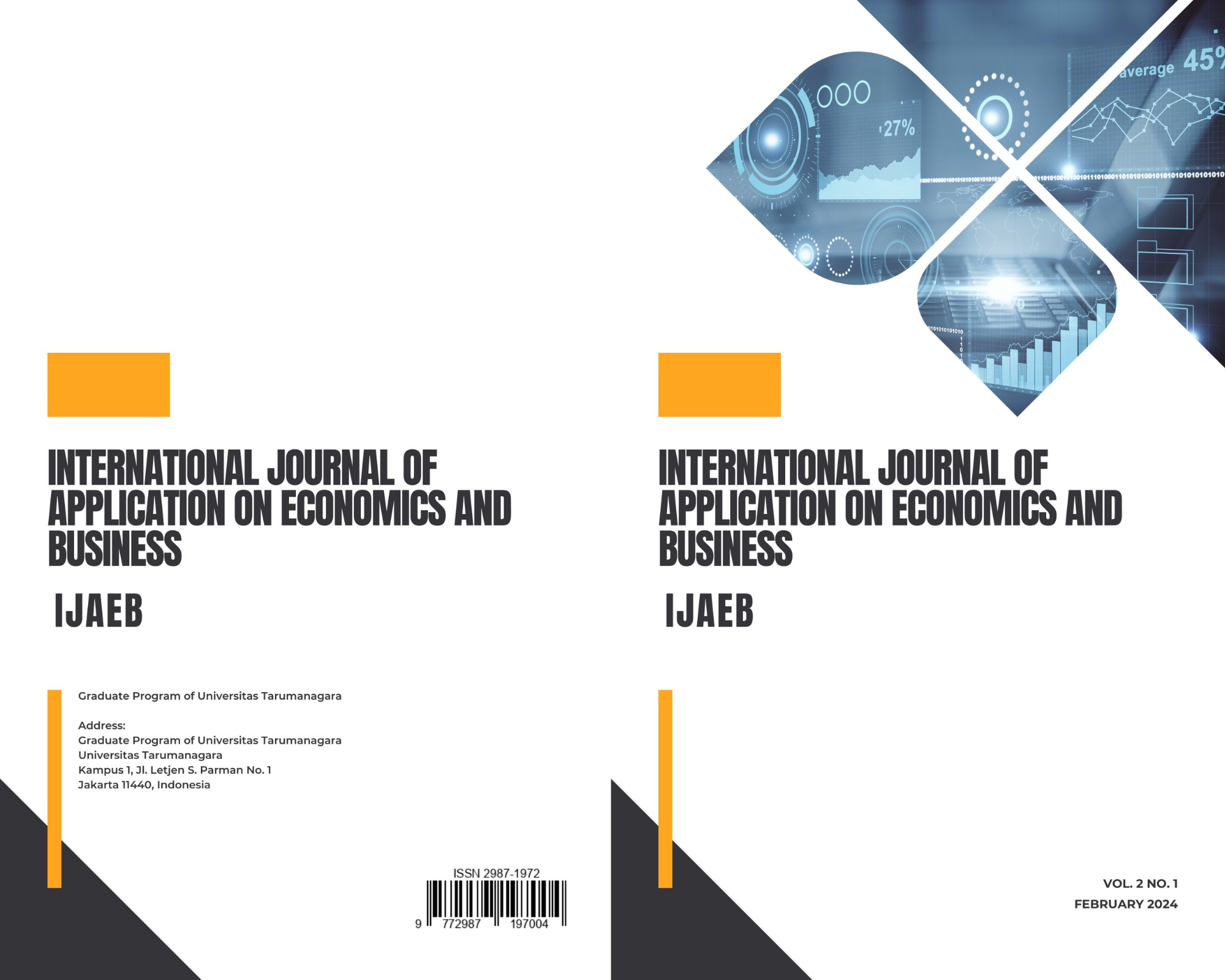ANALYSIS OF FACTORS AFFECTING THE INTENTION TO TRANSACT OF XYZ E-COMMERCE USERS IN JAKARTA: A STUDY OF PERCEIVED EASE OF USE, PERCEIVED USEFULNESS AND PERCEIVED RISK
Main Article Content
Abstract
This Research aims to investigate how perceived ease of use, perceived usefulness, and perceived risk affect the intention to transact on XYZ e-commerce users in Jakarta. The research population involves XYZ e-commerce users who are in Jakarta during the period of this study, which is for 3 months from June to August 2023. The sampling technique used a non-probability sampling method with a purposive approach, involving 147 respondents. Data collection was carried out through distributing questionnaires offline and online. Data analysis was carried out using the Structural Equation Modeling (SEM) method with the Smart PLS 3.0 application. The results showed that 39.8% of the variation in the intention to transact variable could be explained by perceived ease of use, perceived usefulness, and perceived risk. The remaining 60.2% may be influenced by other factors outside the scope of this studyThe research findings also show that both perceived ease of use and perceived usefulness have a positive and significant influence, both individually and jointly on intention to transact at XYZ e-commerce in Jakarta. Meanwhile, perceived risk shows a negative and significant influence on the intention to transact on XYZ e-commerce in Jakarta.
Article Details

This work is licensed under a Creative Commons Attribution-NonCommercial-ShareAlike 4.0 International License.
This journal provides immediate open access to its content on the principle that making research freely available to the public supports a greater global exchange of knowledge.
IJAEB by Graduate Program of Universitas Tarumanagara is licensed under a Creative Commons Attribution-NonCommercial-ShareAlike 4.0 International License.. Permissions beyond the scope of this license may be available at https://journal.untar.ac.id/index.php/ijaeb
References
Alalwan, A. A., Dwivedi, Y. K., Rana, N. P., & Simintiras, A. C. (2016). Jordanian consumers’ adoption of telebanking: Influence of perceived usefulness, trust and selfefficacy.InternationalJournalofBank Marketing,34(5),690-709.
Davis, F.D.B., & Warshaw, P. R. (1989). User acceptance of computer technology: a comparison of two theoretical models. Management Science, 35 (8).
Ghozali, I., & Latan, H. (2015). Konsep, teknik, aplikasi menggunakan Smart PLS 3.0 untuk penelitian empiris. BP Undip. Semarang.
Hair, J. F., Black, W. C., Babin, B. J., & Anderson, R. E. (2014). Multivariate Data Analysis (MVDA). In Pharmaceutical Quality by Design: A Practical Approach (7th ed.). Pearson Education Limited.
Indarsin, T., & Ali, H. (2017). Attitude toward Using m-Commerce: The Analysis of Perceived Usefulness Perceived Ease of Use, and Perceived Trust: Case Study in Ikens Wholesale Trade, Jakarta–Indonesia. Saudi Journal of Business and Management Studies, 2, 995-1007.
Lui, H.K., and Jamieson, R. 2003, TRiTAM: A Model for Integrating Trust and Risk Perceptions in Business-to- Consumer electronic commerce, 16th Bled E-Commerce Conference Transformation Bled, Slovenia, June : 349- 364.
Pavlou, P., 2003, Consumer Acceptance of Electronic Commerce: Integrating Trust and Risk with The Technologi Acceptance Model, International Journal of Electronic Commerce, Vol. 7, No. 3: 71-74.
S.G. Yaseen and S. Zayed, (2010), "Exploring determinants in deploying mobile commerce technology: Amman stock exchange, Information Society (i-Society)", International conference on IEEE, pp. 612-620.
Schiffman dan Kanuk. 2008. Perilaku konsumen. Edisi 7. Jakarta: Indeks
Sekaran, U. & Bougie, R. (2013). Research Methods for Business: A Skill-Building Approach 6th Edition, Wiley, New York.
Sutomo, D. (2012). Pengaruh perceived ease of use, perceived usefulness, dan perceived risk terhadap intention to transact pada toko online di Surabaya. Kajian Ilmiah Mahasiswa Manajemen, 1(1), 30-34.



